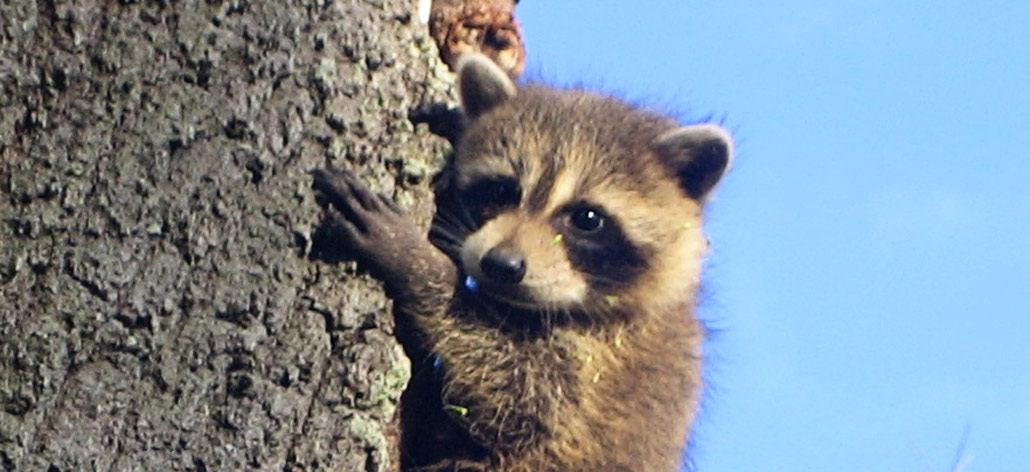- USA Wildlife Removal Education Guide - About Raccoons
About Raccoons

The Texas raccoon has fur that is brown and one can recognize it by the black eye mask around the eyes and the 5 fingers paws resembling a palm print. They weigh around 12-15 pounds and they have a small nose that is sharp as well as small round ears. The trait that is most distinctive is the thick trail which is quite long. The tail has black brown circles that alternate.
Diet
They are active at bight than in the day and so they therefore rest a lot in their dens. They can swim in rivers and streams and also climb trees in the search for food. Their legs are sensitive so as to grip their prey and feed. They are omnivorous and their nutrition is versatile. Wild berries, frogs, fish, crabs and nuts are part of their diet. They also feed on bugs, larvae and worms. They can also feed on eggs and corn. They can ravage through garbage and east small rodents. It is the food persistence that usually brings a conflict between them and humans.
Habitat
They live in forest and they love being near water. Tree trunks, caves and holes offer a home for them. They have amazing climbing abilities and are great swimmer. This means that they can hunt under water. The front legs are mobile and their paws allow them to open bolts and handles. They also make homes within your home and they love the attic.
Biology
Most often, the males will live alone but they do allow the presence of females within their territory. In most areas, mating takes place in spring. Usually, the young ones will stick around with the mother until the next mating season.
Most often, raccoons have been described as being very intelligent and in some aspects, they are even more cunning than the fox.
Read more educational articles about raccoons based on my years of experience as a wildlife professional. Learn about raccoon mating habits, and whether or not the City Or County Animal Services will help you with a raccoon issue. Learn if your Homeowners Insurance will cover raccoon damage, and the first steps you should take if a raccoon gets inside your house. Find out some humane ways to kill a raccoon and how to know if you have a raccoon in your attic. Learn how to keep raccoons out of your house and if it is safe to handle a raccoon with bare hands. Find out how to keep raccoons out of your garden, out of your garbage cans, and even how to remove a raccoon stuck in a dumpster.
Learn how to clean raccoon feces out of your attic, and what equipment is needed to trap a raccoon. Read about raccoon eviction fluid and the diseases that raccoons carry as well as common symptoms of sick raccoons. Learn about a raccoon's natural diet, and about raccoon roundworm. Find out some ways to kill a raccoon in the yard and what wildlife rehabilitators do with raccoons. Learn how to get raccoons out of a wall and find out if raccoons live in more urban or wild areas. I can tell you the best place to relocate a trapped raccoon and if it is even legal to trap a raccoon to begin with.
Find out if raccoons actually use tools, as well as how to identify the symptoms of a sick raccoon. Find out how big raccoons get and what to do about a cage-shy (hard to trap) raccoon.
If you need help, we service the entire USA! Click here for a wildlife removal specialist in your town!
Go back to the main Raccoon Removal page for more information about About Raccoons.

